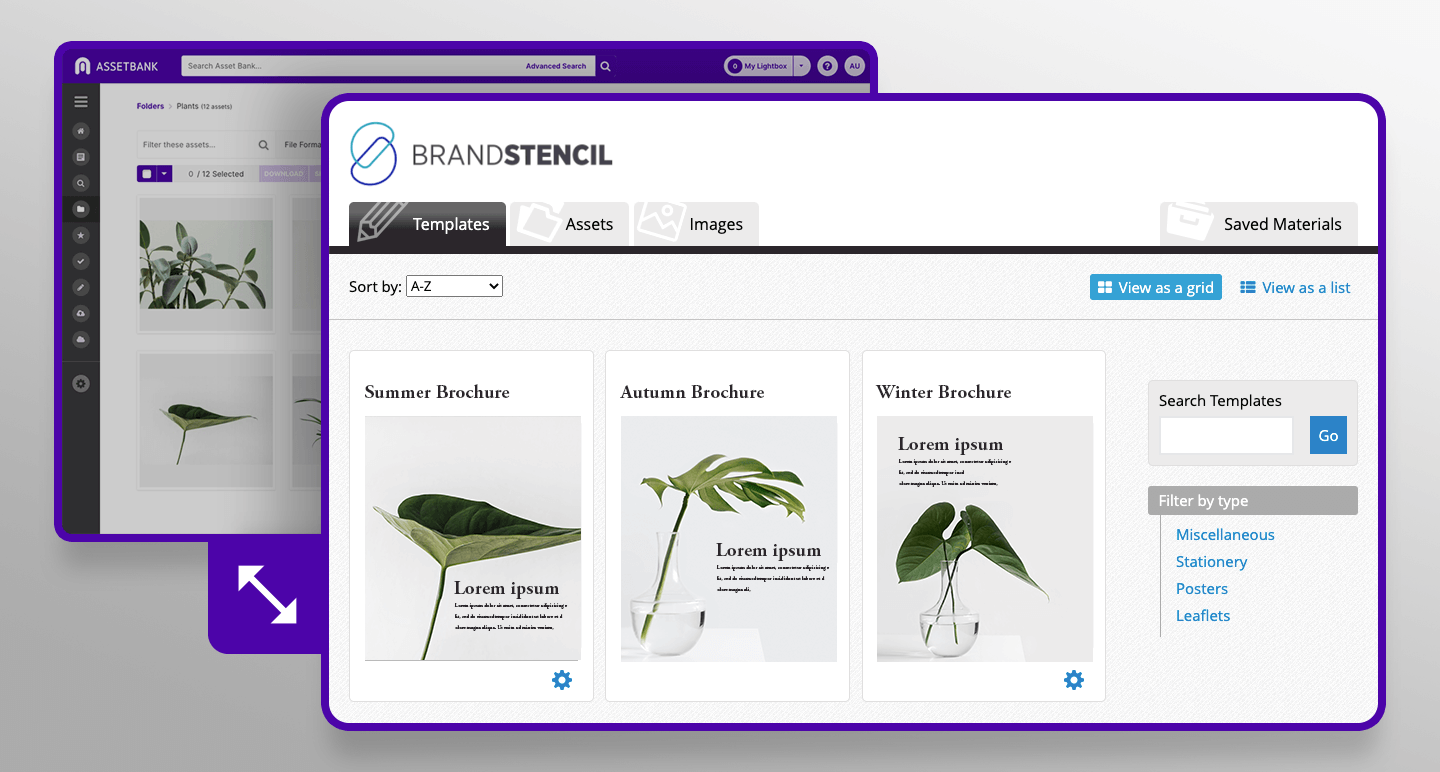
Artists assemble! How DAM is super-powering rebranding for designers
‘Sony Pictures Universe of Marvel Characters’ (SPUMC)... feels a little clunky, doesn’t it?
Seems like the studio shared our sentiment, too. Announcing a rebrand at CinemaCon, as reported by Digital Spy, the ongoing series of superhero movies will now be known as ‘Sony’s Spider-Man Universe’.
Pretty snappy.
Unfortunately, it often feels like you need your own superpowers to get through the rebranding process - especially as a designer.
Take Uber for example: after rebranding, 44% of people surveyed by Pollfish were left scratching their heads over what the new logo actually means. Even more damning was the fact that 73% recognised and correctly identified the old logo as Uber.
For brands, sometimes that costume change just isn’t as good as a rest.
To rebrand or to revitalise? That’s the question
According to Dawson Whitfield over at HubSpot, taking the time to understand the reasons for, and risks associated with, a rebrand is essential before doing the work.
“If you're looking at rebranding your business because sales have been slow or brand awareness efforts don't seem to be paying off, you might want to reconsider -- these issues can potentially be solved by creating a new marketing strategy, or conducting market research to identify the underlying cause,” he said.
Whitfield suggests some valid reasons for a rebrand include:
- Branching out into new locations or markets
- Market repositioning for new customer profiles
- A new philosophy, e.g. changing company mission, vision and values
- If you’re involved in a merger or acquisition
But rebranding out of boredom should never be an option; the company may be getting restless with your logo but that doesn’t mean customers feel the same. Similarly, rebranding to cover up a crisis or in an attempt to grab attention could do more long-term harm than good.
In fact, for Mark Ritson, brand consultant and former marketing professor, rebranding should be an absolute last resort.
“Take all the disadvantages of repositioning and then add the massive additional disadvantage of losing all awareness, salience and familiarity, and then having to build them from scratch, and you begin to glimpse the enormous fallacy of rebranding. You do it for only one reason – because for legal reasons you have to,” he said in an article for Marketing Week.
Instead, organisations should try a three-step plan to revitalise the brand:
Step 1: revisit a time when the brand was successful and you had loyalists. Then try to isolate what made you special.
Step 2: Distil the insight you got from that initial diagnosis. Then try to explain in the most concise way possible.
Step 3: consistency demands change. So take these learnings and ask yourself how they fit into the present day. You can’t repeat past tactics, however successful they were at the time.
But if your organisation is still set on a rebrand, it’ll take a lot more than a shiny new outfit to resonate.

Never miss an update from us.
We're all about helping to make your workday more inspiring and productive.
It’s what’s under the mask that counts
For Misty Locke, global chief marketing officer at Dentsu International, getting the external-facing look and feel of your brand right means first being honest about what’s inside.
“Of course, your brand needs to look good and be polished, but the first and most significant thing to do is understand ’who you are’, while equally as important ’who and what you aren’t’. Also, when doing this you need to be honest – and I mean scarily honest – or else you’ll end up as a hollow brand with no true heart or purpose,” she told The Drum.
After all, the best superheroes are the ones that do a little soul searching, right?
Honesty about who you really are will ensure an authentic experience for your customers. And when it comes to the rebranding process, perception is everything.
“Your brand identity can be a critical tool that can signal a change in who you are and what you want to stand for. There doesn’t need to be a choice between evolution and revolution. In reality we should always aim to achieve both. An evolution in people’s ability to recognize your brand, with a revolution in how they perceive it,” adds Paul Taylor, chief creative officer and founding partner, BrandOpus.
But this can prove a tricky task for designers; those who are left juggling various stakeholders’ interests along with their own creative instincts. The weight and responsibility of the branding process, inevitably, sits on their shoulders - and it’s a heavy load to bear.
Yep, “...with great power comes great responsibility”, etc.
The good thing is, Digital Asset Management (DAM) systems can make this unenviable task a little easier. Here’s how...
Make sense of what’s already there
Imagine you’ve received a great brief for the rebrand.
It includes everything from the company’s vision and values to key demographics and your competitor set. Better still, you’ve been involved in the stakeholder meetings and learnt the information first hand too.
Sounds about as fantastical as Wakanda, right?
Unfortunately, even if this idyllic scenario does come to light, you’ve still got to wade through tons of information about the brand.
But why is that?
Well, in these situations, there’s often the temptation to “start from scratch”. But doing so can actually risk damaging any brand salience you might already have. First, you need to find out what elements are worth keeping and adapting - and what’s not worth the effort.
“Ideally, some elements of your current brand will be preserved, so that there’s a feel of continuity when you rebrand, and you don’t lose the elements that already resonate with your target audience. Basically: if it ain’t broke, don’t fix it,” argues Anada Lakra at 99designs.
Essentially, DAM systems act as centralised hubs for all of a brand’s assets.
Asset Bank supports all digital files types and allows designers to preview each item clearly without having to download it. You can also send feedback within the system to administrators if you’re unsure about a file. This saves countless hours trawling through folders wondering what’s the current and correct asset in circulation.
Because the rebranding process is involved enough for designers - without the extra admin.
Fitting into your creative workflow
This is why we’ve integrated Dash, our DAM solution for SMEs with Adobe Creative Suite and Microsoft Office. This keeps designers locked into their creative processes by allowing them to:
- browse documents and images on Dash from within Adobe/Microsoft applications
- drag-and-drop images straight into documents
- upload edited document backs into Dash
- link images from Dash to InDesign files
Not only that, Asset Bank integrates with tools like BrandStencil; perfect for creating templated content at scale and Ziflow; which takes the headache out of proofing.

Asset Bank seamlessly integrates with BrandStencil
These features are basically the Iron Man suit to your Tony Stark. He’s the creative, time-strapped genius; the costume just helps him fulfil his purpose.
And when it’s time to showcase your efforts...
Give people a flavour and get feedback
Basically, Captain America may lead The Avengers, but he can’t do it all alone.
And although we’re not suggesting creating by committee, there is a time in every rebranding process when designers need to open their work up for feedback. Other stakeholders will have valuable insight into the brand and it’s crucial to get them involved for a QA before the big unveil.
Well, set those stakeholders up as administrators in the DAM system and you can request feedback as you go.
Not only that, by customising your DAM system in the new branding, you can get a flavour of how things will look before they go live. Particularly handy if departments are feeling protective of their online assets, e.g. the website, eCommerce site or blog.
But your mission isn’t over yet Winter Soldier...
Managing stacks of digital assets
At the end of the branding process, you’ll likely have more digital assets than Peter Parker has photographs.
And here lies the problem.
If you haven’t already got a DAM solution setup, it’s to continue troublesome habits like saving multiple versions of files here-there-and-everywhere.
But a rebrand is the perfect time to address the way you’ve been storing and distributing those assets in-house. For there to be a need to rebrand in the first place usually means that something inside the organisation has changed - or at least one is on the agenda. So what better time to look at those internal processes than now?
Bright did this for ITVCreative when the organisation was going through major changes; our team created a central ‘hub’ to manage and share its newly branded digital assets. This ensured the organisation’s creative visual changes were used consistently by employees, suppliers, partners, journalists and anybody else working with the brand.
But whether you’re a bigger organisation going through a major change or a growing SME that’s ready to focus on branding, DAM systems can streamline the process for designers.
Not sure how to pitch the design benefits of Digital Asset Management to your manager though? Don’t worry, we’ve written more about how to build a case for DAM solutions here.
That Spider-Sense tingling, yet?
Get in touch to give one of our DAM solutions a try (it’s completely free).


